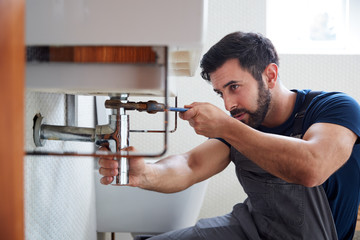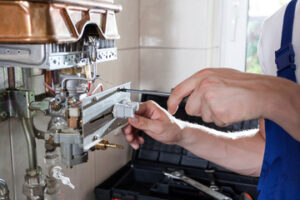Many new roofing entrepreneurs are worried about legal processes and accounting for business, but they can be much simpler than they seem. The roofing community is full of accountants and attorneys happy to help.

Ask your roofer about their insurance and state licenses. A lack of these documents may be a red flag and indicate a fly-by-night company that will take your money and run. For professional help, call Roofing Companies Baton Rouge.
Licensed roofing contractors are trained and equipped to handle roof jobs. They also have the skills and knowledge to perform other types of home improvement projects, such as siding installation or window replacement. Unlike unlicensed companies, licensed roofers usually perform their work themselves, instead of hiring subcontractors to do it for them. In the United States, most states require roofing contractors to have a license before they can start working on your home. However, the specific requirements vary from state to state. Some have their own licensing and insurance guidelines that they must follow, while others leave the responsibility to city-level or local jurisdictions.
Besides meeting the licensing and insurance requirements, a roofing company should have a professional-sounding name that’s easy to remember. A well-chosen name can help a company stand out from the competition and attract new clients. In addition, the company’s name should reflect its expertise in roofing. This will set it apart from competitors who choose to focus on marketing and other aspects of their business rather than building their skills in roofing.
If you’re considering working with a roofing company, ask them for proof of their licensing and insurance before signing a contract. If they aren’t willing to provide you with these documents, look elsewhere. You can also check online reviews and references to see how other people have dealt with the company.
It’s important to note that some states have their own requirements for roofers to be licensed and insured. Oneida County, for instance, requires all roofers to have a general business license before they can perform any work on a residential or commercial property. This license includes a bond that ensures the roofing contractor will pay any damages that may be caused by their work.
Roofing is a rugged job, and accidents and injuries can happen. Having the right insurance will protect your company against damage to life and property, as well as lawsuits from injured employees. Typical business insurance policies include workers’ compensation, general liability insurance, and auto and equipment coverage. You should also be sure that your roofers are properly trained and have the necessary safety gear to complete the work safely.
They are insured
Roofing contractors have the experience, skills and knowledge to safely complete roof repair and replacement projects for homeowners. In addition, they have the proper tools and equipment for the job. They also know how to handle and dispose of roofing materials properly. This is important because improper disposal can lead to environmental issues. Moreover, they have liability insurance that covers their work and the people they hire to do the work.
Besides general liability insurance, roofing contractors should have workers’ compensation, commercial auto and equipment insurance as well. Workers’ comp coverage provides medical expenses and disability benefits for employees who are injured on the job. It’s required by law in most states, although the specific rules vary by state. Commercial auto insurance is needed if the roofing business uses cars, trucks, vans or trailers for work. Personal auto insurance does not cover these vehicles. Lastly, equipment insurance protects the company’s investments in machinery and tools.
A reputable roofing contractor will offer workmanship warranties. These warranties typically cover repairs for material failures resulting from poor installation. However, they may exclude circumstances that aren’t related to the quality of the roofing installation, such as weather or tree damage.
If a roofing contractor isn’t insured, you should avoid working with them. Depending on the circumstances, an uninsured roofer can be sued for negligence. This could lead to expensive legal bills and potential damages to your property. In addition, uninsured roofers are often unable to provide proof of insurance when you need it.
In the event that a worker is hurt on the job, homeowners should only work with contractors who have workers’ compensation insurance. This protects the homeowner against lawsuits by the injured worker. In Canada, almost all businesses must pay into the provincially run workers’ compensation program.
You can verify a roofing contractor’s insurance by checking their ACORD certificate. It is a one-page summary of the company’s insurance policies, and it includes the coverage limits for each policy. It is available through your insurance broker. You can also ask your contractor to add you to the policy as an additional insured for a particular project.
They are experienced
Roofing contractors are skilled in all aspects of the re-roofing process, from estimating job costs to ordering and delivering materials. They can also help guide homeowners through the permitting and inspection stages. A good roofer can address all issues that may arise during a re-roofing project, and will be able to finish the job on time and within budget. They can even handle the complexities of large commercial projects.
A reputable roofing company will have insurance and a fictitious business name filing. This is a legal requirement to protect consumers from fly-by-night roofers who can steal your money and leave you with an unfinished, substandard roof. It is important to check the roofer’s licensing, fictitious business name filing, and tax ID number before hiring them. It is also a good idea to look for the company’s website and reviews.
In addition to roofs, many roofing companies specialize in other home improvement services like window installation and gutters. These companies can offer competitive prices and comprehensive warranties. They can also provide references for past work. Roofing contractors usually perform the work themselves, rather than subcontracting to others. They are also familiar with the local regulations that govern this type of home improvement.
Choosing a name for a roofing business can be tricky. The name should be catchy and easy to remember. It should also reflect the company’s niche, such as residential or commercial. Some roofing businesses use pamphlets and fliers to promote their services, while others rely on door-to-door salesmanship.
It is also important to establish a business plan before starting your roofing company. This will include an estimate of your startup costs, operating expenses, and marketing budget. It is a good idea to hire an accountant to help you with this. This will help you determine your startup costs and ensure that you don’t exceed them.
A good roofing contractor will have multiple ways to market their business, including social media, websites, and paid online advertisements. They will also have a physical office and phone number. If they do not accept credit cards, it is important to get a merchant account as soon as possible. This will allow you to increase your customer base and make it easier for your customers to pay.
They are affordable
Whether you’re starting a roofing business or looking to improve the existing one, it is important to set your goals and work towards them. You’ll need to determine how much money you can spend, as well as the total costs of operations and marketing. A good accountant can help you with this. They can also help you create a business plan that is realistic and will help your company thrive.
Roofing contractors can distinguish themselves by using traditional marketing strategies. These include networking, building partnerships, client recommendations and local advertising. Many of these techniques are inexpensive and highly effective, but they can take time to develop. They can also require a great deal of persistence.
Before hiring a roofing contractor, make sure to view their portfolio of work. Seeing the quality of their work will give you an idea about their skill level and commitment to customer satisfaction. Also, look for safety protocols. If they don’t have any, it is a red flag and you should avoid working with them.
Another way to choose a roofing contractor is by asking for references. You’ll want to know if they are licensed and insured, and have a good reputation in the community. You can also ask about their work history and any problems they may have encountered. Lastly, you’ll want to check if they have a website and social media page.
To stand out, a roofing business can offer competitive pricing or provide additional services that other competitors don’t. It can also focus on marketing and use social media to reach potential customers. Adding a payment option like credit cards can also attract more customers and increase the likelihood of conversion. Moreover, a roofing business can hire a freelance bookkeeper to manage daily financial transactions. Typically, these professionals are available for a reasonable fee through online outsourcing platforms.








